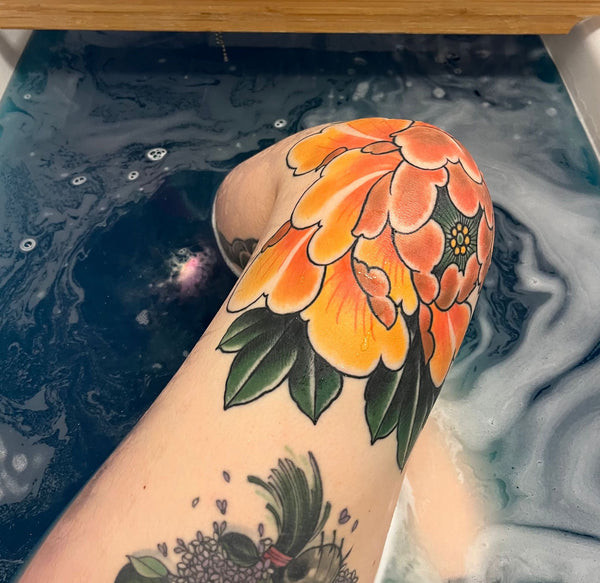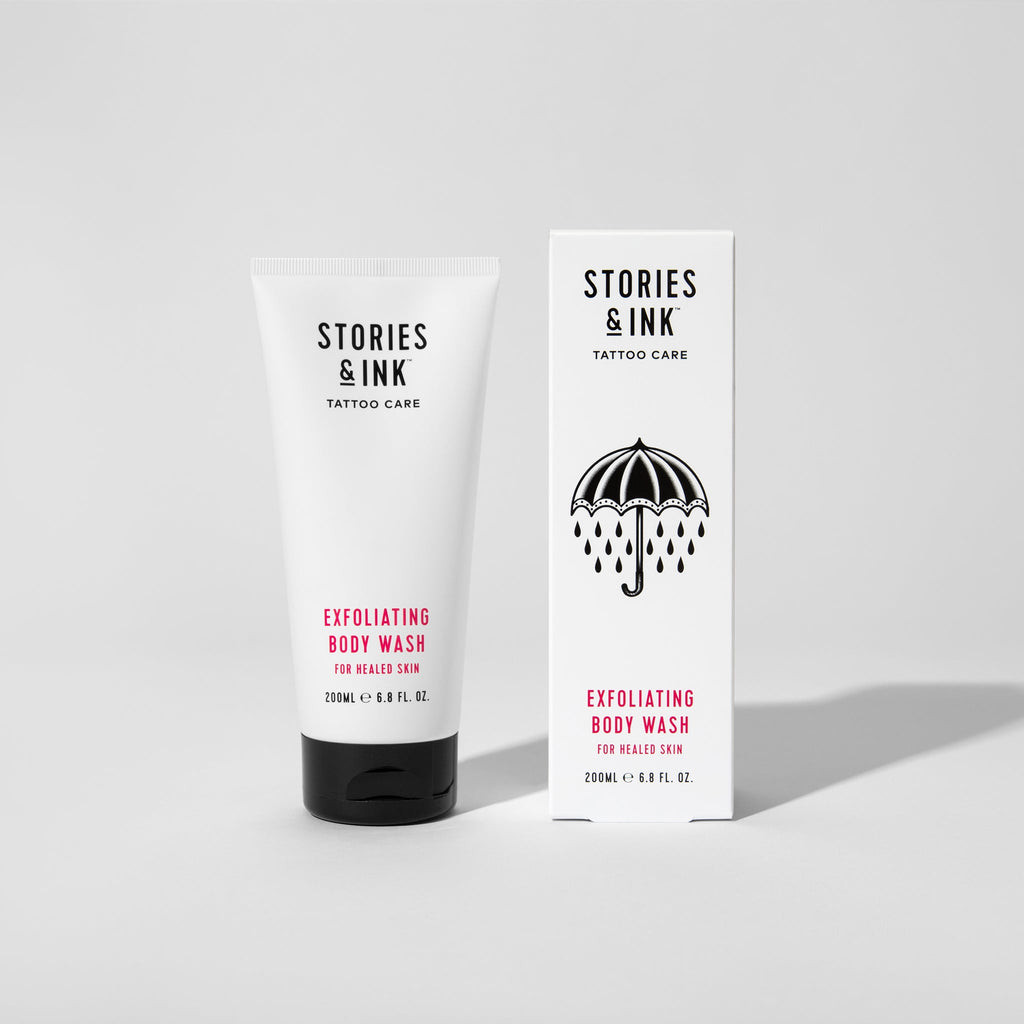Knee tattoos have gained popularity for their unique placement and bold statement. If you’re considering getting inked on your knee, you might be wondering, “how long do knee tattoos take?” This is a crucial question, as tattoo duration affects your preparation, pain tolerance, and overall experience. Let’s delve into the factors that determine the time it takes to complete a knee tattoo, ensuring you’re fully informed before your appointment.
Factors Influencing Knee Tattoo Duration
The duration of a knee tattoo isn’t fixed; it varies based on several key aspects. Understanding these factors will give you a realistic expectation of the time commitment involved.
Complexity and Size of the Design
Unsurprisingly, the intricacy and dimensions of your chosen design are primary determinants of tattoo duration. A small, simple design with minimal linework will naturally take less time than a large, highly detailed piece.
- Intricate details: Designs featuring fine lines, shading, color gradients, and complex patterns demand more time and precision from the tattoo artist.
- Size and coverage: A tattoo that covers the entire kneecap and surrounding area will require significantly longer sessions compared to a smaller, localized design.
For instance, a simple word or symbol might take an hour or two, while a full kneecap mandala or a realistic portrait could extend to multiple sessions spanning several hours each.
Tattoo Style: Blackwork vs. Color
The style of your tattoo also plays a significant role in the time required.
- Blackwork tattoos: Generally, blackwork tattoos, which primarily use black ink for outlines and shading, tend to be quicker to execute. Black ink is typically faster to apply compared to color inks.
- Color tattoos: Color tattoos often require more time due to the need to layer different pigments, ensure color saturation, and potentially blend colors seamlessly. For intricate color designs, artists may need to switch between needles and inks more frequently, adding to the overall time.
 Knee tattoo by Toby Gawler
Knee tattoo by Toby Gawler
A detailed peony knee tattoo, such as this piece by Toby Gawler, often requires multiple sessions due to its intricate linework and color.
Artist’s Expertise and Speed
The experience and working pace of your tattoo artist are also considerable factors.
- Experienced artists: Seasoned tattoo artists often develop efficient techniques and a quicker working speed without compromising quality. They are adept at handling various tattoo styles and can estimate time accurately.
- Artist’s style and approach: Some artists are naturally faster, while others are more meticulous and deliberate in their approach, which can affect the overall time.
It’s beneficial to discuss the estimated duration with your chosen artist during the consultation. They can provide a more precise timeframe based on your specific design and their working style.
Client’s Skin and Cooperation
Surprisingly, your skin type and how well you cooperate during the session can influence the tattoo duration.
- Skin type: Certain skin types might take ink more readily than others. Hydrated, healthy skin generally accepts ink better than dry or damaged skin. Preparation, like exfoliating and moisturizing the area beforehand, can help optimize your skin for tattooing.
- Pain tolerance and stillness: Knee tattoos are often reported as being more painful due to the bone proximity and nerve endings in the area. If you need frequent breaks due to pain or find it difficult to remain still, the session may take longer.
As tattoo artist Hanah Elizabeth (@hanahelizabethtattoo) mentions, knee tattoos can be “painfully uncomfortable to sit still for.” Being mentally prepared for potential discomfort and communicating openly with your artist about breaks can help manage the session time effectively.
Average Timeframes for Knee Tattoos
While the exact duration is design-dependent, we can provide general estimates for different sizes and complexities of knee tattoos:
- Small and Simple Knee Tattoos (1-3 hours): These include minimalist designs, small symbols, single words, or simple geometric shapes. If you’re opting for a less intricate design, expect a shorter session.
- Medium-Sized Knee Tattoos (3-6 hours): This category encompasses designs like palm-sized mandalas, floral pieces, or moderately detailed blackwork. These tattoos may be completed in a single longer session or split into two shorter sessions.
- Large and Detailed Knee Tattoos (6+ hours, often multiple sessions): Large, highly detailed pieces, such as full kneecap coverage designs with intricate patterns, realistic portraits, or complex color work, will invariably require multiple sessions. These can easily extend beyond 6 hours and may be spread over several appointments to ensure both artist and client comfort and optimal tattoo quality.
Thinking back to personal experiences, a full color pink peony knee tattoo, as mentioned in the original article, took approximately 4 hours with breaks. Another example of a peony knee tattoo took around 5-6 hours over two sessions, highlighting the variability even within similar designs.
Session Splitting: Is it Necessary for Knee Tattoos?
For larger or more complex knee tattoos, splitting the session into multiple appointments is often recommended and beneficial.
- Managing pain and fatigue: Knee tattoos can be more painful and tiring due to the location. Splitting sessions allows you to manage pain and discomfort more effectively, preventing premature session end due to client fatigue.
- Maintaining tattoo quality: Both artist and client fatigue can compromise the quality of the tattoo in very long sessions. Breaking it down ensures the artist can maintain focus and precision throughout the entire process, leading to a better final result.
- Healing time in between: For color tattoos especially, artists might recommend a session for linework and a separate session for color, allowing for some initial healing time in between. This can help with color saturation and reduce trauma to the skin in a single extended session.
Preparing for Your Knee Tattoo Appointment (and Longer Sessions)
Proper preparation is crucial for any tattoo, but even more so for potentially longer and more sensitive sessions like knee tattoos.
- Exfoliate and moisturize: As Hanah Elizabeth advises, “Exfoliate the area beforehand as knees are notoriously dry and thick skinned.” This helps create a smoother canvas for tattooing. Use a gentle exfoliating body wash like Stories & Ink exfoliating body wash in the days leading up to your appointment.
- Stay hydrated and eat well: Being well-hydrated and having a substantial meal before your appointment can help manage pain and prevent lightheadedness, especially for longer sessions.
- Mental preparation: Mentally prepare for the session, acknowledging that knee tattoos can be more painful. Relaxation techniques and focusing on breathing can be helpful during the process.
- Open communication with your artist: Discuss your concerns about pain and session length with your artist beforehand. They can advise on breaks, aftercare, and session splitting if needed.
 Stories & Ink exfoliating body wash
Stories & Ink exfoliating body wash
Preparing your skin with a good exfoliating body wash, like this option from Stories & Ink, can optimize your skin for the tattooing process, potentially affecting the session time and ink absorption.
Conclusion
So, how long do knee tattoos take? The answer is multifaceted and depends on the design’s complexity, tattoo style, artist’s speed, and your own skin and cooperation. While simple knee tattoos might be completed in a couple of hours, larger and more detailed pieces can require several sessions spanning many hours.
Understanding these factors and having open communication with your tattoo artist will ensure you have a realistic expectation of the time commitment and can adequately prepare for your knee tattoo journey. Remember to prioritize quality and your well-being over rushing the process. A well-executed knee tattoo is worth the time and effort, resulting in a stunning piece of body art you’ll be proud to showcase.

